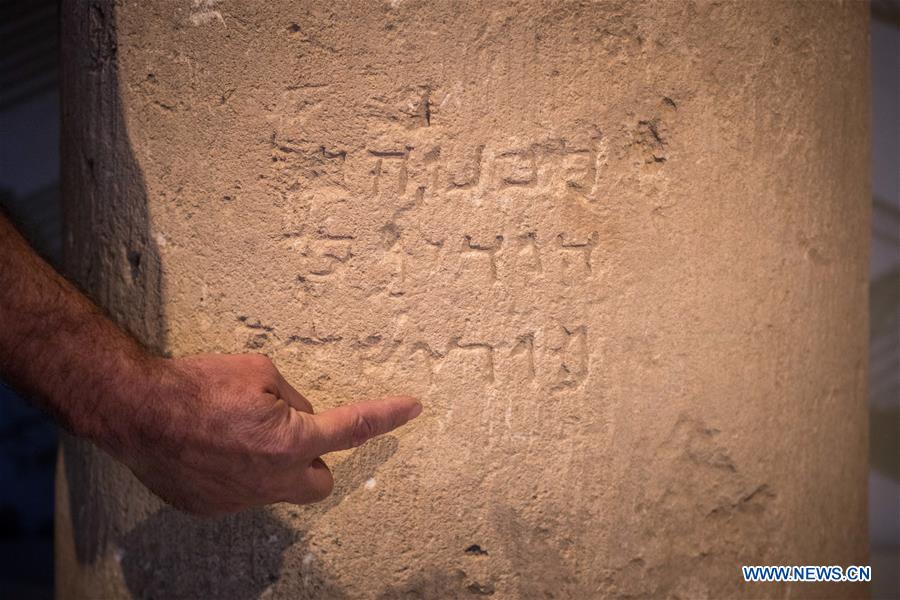 ?
?Photo taken on Oct. 9, 2018 shows the inscription of Hebrew name of Jerusalem on a stone column drum at a press conference in the Israel Museum in Jerusalem. A unique stone inscription dating back to first century, with the earliest known full Hebrew spelling of the word "Jerusalem", was presented on Tuesday. (Xinhua/JINI)
JERUSALEM, Oct. 9 (Xinhua) -- A unique stone inscription dating back to first century, with the earliest known full Hebrew spelling of the word "Jerusalem", was presented on Tuesday.
At a press conference held by the Israel Antiquities Authority (IAA) and the Israel Museum, the 2,000-year-old inscription was shown to the public.
It was found near the Jerusalem International Convention Center during an excavation directed by the IAA, prior to the construction of a new road.
During the excavation, the foundations of a Roman structure were exposed, which were supported by columns.
The most important discovery was a stone column drum, reused in the Roman structure, upon which the Aramaic inscription appears, written in Hebrew letters typical of the Second Temple period, around the time of Herod the Great's reign.
The Second Temple period in Jewish history lasted between the years 530 BCE and 70 CE, when the Second Temple of Jerusalem existed.
The inscription will be displayed to the public at the Israel Museum in Jerusalem, as part of a new exhibit presenting unique artifacts from the city.
Beside the unique inscription, two new additional finds will also be on display at the museum: a Greek mosaic inscription of the 6th Century CE and a first century coffin cover, with a Hebrew inscription reading "the son of the High Priest".















